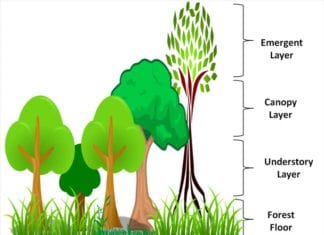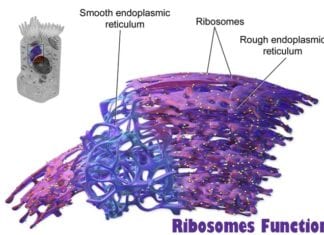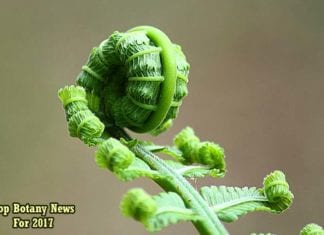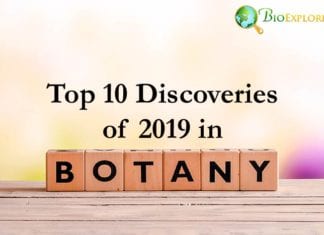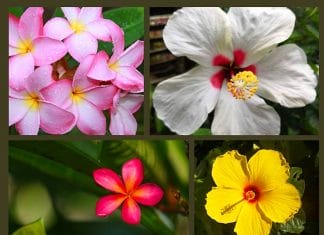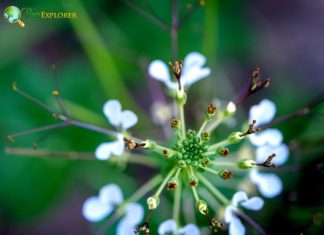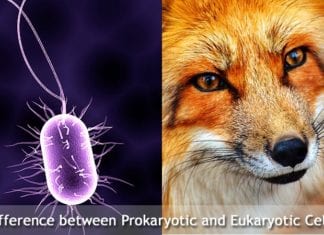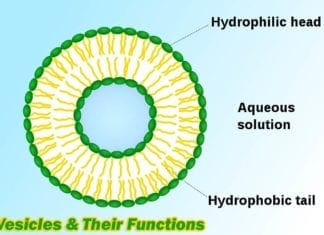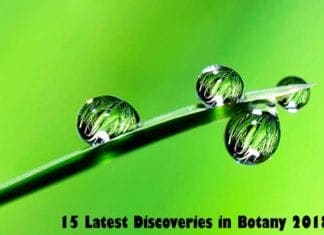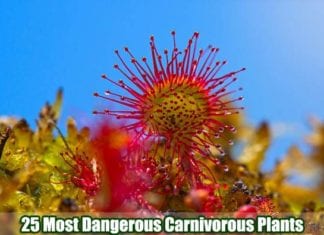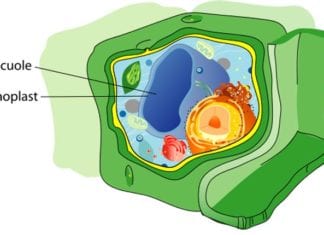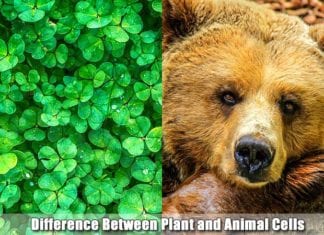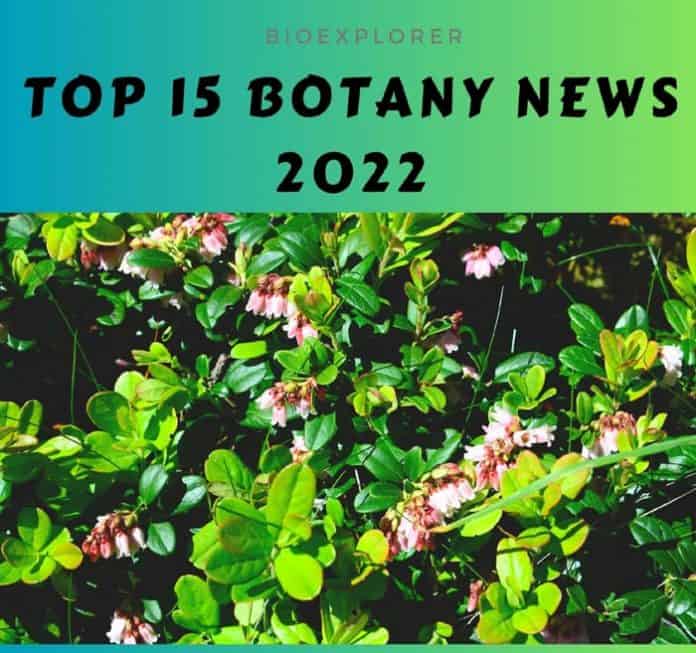
In 2021, scientists tried to understand the complex relationships between plants, climate, and metabolites at transcriptomics, proteomics, and metabolomics levels. The current discoveries highlight the role that trees play in wetland methane emissions. They identify the factors that led to the change in plant vascular structure. This may provide insight for breeding drought-tolerant plants.
There is a direct connection between FA metabolism and plant immunity. Researchers are bioengineering photosynthetic enzymes to increase yield. They have also discovered new Iris species. There is collaborative implementation at the diagnostic level of various plant pathogens.
Table of Contents
- Top 15 Botany News of 2022
- 1. Scientists claim that trees in wetland areas are the biggest methane vents even when they are dry (UK, Dec 2021)
- 2. Scientists advocated that increasing Carbon Dioxide (CO2) channels in plant membranes have no impact on photosynthesis (USA, May 2022)
- 3. A recent study has revealed that early plants’ vascular systems changed as they transitioned from their aquatic habitats to growing on land)
- Top 10 Botany News in 2020
- 4. Scientists found that plants adapt to climate change using their epigenetic imprints (USA, Nov 2022)
- 5. Scientists confirmed that conifers do communicate that brings variation in air pollution (Finland, Sep 2022)
- 6. Scientists discovered the missing link as to how immunity is impacted by fatty acid metabolism in plants (USA, Oct 2022)
- Top 26 Best Hawaiian Flowers
- 7. Researchers demonstrate how a particular group of cells in the root’s tip respond to a manganese deficiency (Germany, Oct 2022)
- 8. Recently scientists discovered how a little peptide strengthens almonds’ fight against harmful microbes (USA, Oct 2022)
- 9. Researchers found new information on how membrane proteins affect plant growth (Japan, June 2022)
- Explore Vesicles, Types & Their 9 Major Functions
- 10. New research discovers molecular “blueprint” that explains the plants’ process of perceiving light (USA, Mar 2022)
- 11. Researchers have developed a wearable sensor for plant leaves to detect water loss early. (USA, Mar 2022)
- Top Cell Biology News of 2020 – A Round Up
- 12. Researchers used bacteria to create plant protein mechanisms to advance 50 years of work. (USA, Feb 2022)
- Top 14 Biochemistry News, Innovations & Breakthroughs In 2017
- 13. Botanist discovers new iris species in South Africa’s Langeberg Mountains. (South Africa, Oct 2022)
- 25 Most Famous & Dangerous Bug Eating Plants
- 14. Plant pathologists work together to exchange information on a growing risk to corn production. (USA, Jan 2022)
- 15. A new study shows how, with “chemically encoded” enzymes, plants can modify their lignin to adjust to climatic change. (Sweden, Dec 2022)
- Differences Between Plant and Animal Cells – A Complete Overview
- Conclusion
Top 15 Botany News of 2022
1. Scientists claim that trees in wetland areas are the biggest methane vents even when they are dry (UK, Dec 2021)

According to researchers, tree root systems are responsible for most of the methane gas emissions from the Amazon wetlands regions, and these emissions can still be significant even when the ground is not submerged.
- Researchers have discovered evidence that trees growing on floodplains in the Amazon basin emit far more methane than soil or surface water, which occurs in both wet and dry conditions.
- Methane is the second-most significant greenhouse gas, and wetlands are the primary source of methane in our atmosphere. Methane emissions through this route are the subject of extensive research, but models typically assume that the gas is only produced when the ground is completely submerged and flooded.
- Methane would typically rise to the surface of a wetland without trees and be consumed by the soil.
- Still, in a wetland covered with trees, the researchers believe the tree roots may act as a channel for the gas, carrying it to the surface where it vents into the atmosphere from the tree trunks.
- This pathway escapes methane, even when produced in soil and water several meters below ground.
So, this finding shows that an important aspect of the picture needs to be added to the most recent estimates of global emissions. We must now create models and procedures considering trees’ important role in wetland methane emissions.
Suggested Reading:
Explore The Layers Of The Rainforest
2. Scientists advocated that increasing Carbon Dioxide (CO2) channels in plant membranes have no impact on photosynthesis (USA, May 2022)

In a recent study, botanists looked at how increasing the number of carbon dioxide channels in plant membranes might affect photosynthesis. Still, they were unable to find any effects in model tobacco plants.
- Carbon dioxide (CO2) must be supplied to the chloroplasts within leaf cells, where the Rubisco enzyme fixes it into sugars for photosynthesis to occur.
- CO2 must diffuse into the leaf and through the leaf mesophyll cells, overcoming obstructions like cell walls and membranes to reach the chloroplast. Crop yields will increase due to increased CO2 diffusion through mesophyll cells into the chloroplast (also known as mesophyll conductance), improving water quality.
- The Plasma-membrane Intrinsic Proteins (PIPs), a subset of plant aquaporins, have been shown in prior studies to be capable of CO2 transfer in test systems, but there have been conflicting reports regarding their function in mesophyll conductance in the plant.
- In this study, we increased the number of PIP aquaporin channels in the membrane of the mesophyll cell. Still, surprisingly, this did not affect the rate of photosynthetic activity and did not significantly increase the conductance of CO2 through the mesophyll cell.
- Plant growth and environmental factors may significantly influence aquaporins’ capacity to modify mesophyll conductance.
This study contributes to understanding how CO2 moves from the atmosphere to chloroplasts. The research aimed to comprehend aquaporin function better to enhance mesophyll conductance and photosynthesis.
Researchers resolve a botanical puzzle that has persisted for a century and was crucial to the spread of plant life on land (USA, Nov 2022)
Suggested Reading:
Ribosomes Function: The Cell’s Protein Machinery
3. A recent study has revealed that early plants’ vascular systems changed as they transitioned from their aquatic habitats to growing on land)

Only a few centimeters tall at most, the earliest land plants were confined to moist, bog-like habitats near streams and ponds. To better extract water from the soil and use it for photosynthesis, plants evolved vascular systems about 400 million years ago; this change permanently altered the Earth’s atmosphere and ecosystems. How ancient plants moved from swamps and riverbanks to new habitats with little access to water is a mystery that has baffled paleontologists for 100 years.
- A team of researchers has now resolved this mystery. In the context of drought, modern plant vascular systems are especially developed.
- The specialized tissue known as the xylem, responsible for carrying water and nutrients from the soil to stems and leaves, becomes clogged with air bubbles when plants dry out.
- The water cannot move because of the bubbles. If allowed to continue, they spread throughout the network, sever plants from the soil, and eventually cause plant death. The research team used the same reasoning to explain the patterns of vascular organization in the fossil record.
- Avoiding the formation and spread of these bubbles is crucial for tolerating drought today. The early land plants’ cylinder-shaped vascular systems, which resembled a bundle of straws, had initially served them well in their early aquatic habitats.
- The plants had to get past the air bubbles brought on by the drought as they moved onto land with less water.
- Early land plants did this by reconfiguring the ancestral, cylindrical-shaped xylem into more complex shapes that prevented air bubbles from spreading.
The factors that led to the change in plant vascular structure may provide insight for breeding drought-tolerant plants, enhancing our ability to withstand the effects of climate change and resolving issues with production-related food insecurity.
Suggested Reading:
Top 10 Botany News in 2020
4. Scientists found that plants adapt to climate change using their epigenetic imprints (USA, Nov 2022)

Animals can adjust and thrive amidst changing circumstances. Interestingly there is mounting evidence indicating that plants possess a capacity. An article detailed how plants are swiftly adapting to counteract the impacts of climate change, and intriguingly they are also passing these adaptations down to future generations.
- Many plants need a minimum amount of cold to establish their environmental clock, determining when they will bloom.
- Plants have adapted to require less time in the cold to delay flowering as cold seasons get shorter. These mechanisms enable plants to delay flowering when they have fewer opportunities to procreate.
- Plants lack networks and rely on their molecular and biochemical networks to store memories. These networks are known as memory, as referred to by the researchers.
- These mechanisms enable plants to detect an earlier environmental condition and respond more quickly when the same consequential condition occurs.
- Epigenetics can transmit these somatic memories to the plants’ offspring. It has been emphasized that important genes, proteins, and small oligonucleotides shown in earlier studies are crucial in the memory of abiotic stresses like pathogen attacks, heavy metal poisoning, and drought.
This study is especially significant in light of the current rapid climate change, to which all living things-including plants-need to adapt to survive quickly.
Suggested Reading:
Top 12 Botany News For 2017
5. Scientists confirmed that conifers do communicate that brings variation in air pollution (Finland, Sep 2022)
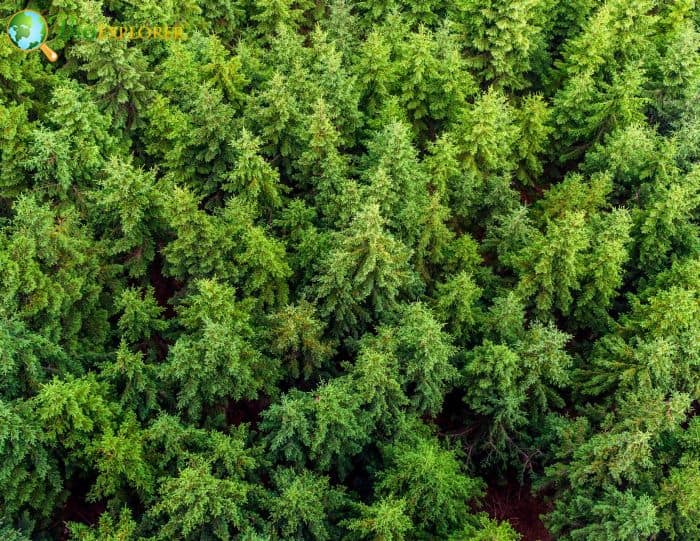
According to a recent study, conifers release significant amounts of volatile organic compounds in response to bark-feeding weevil attacks, which serve as vital cues for nearby seedlings.
- In boreal forests, conifers predominate as tree species but are vulnerable to attack from bark beetles.
- According to a recent study from the University of Eastern Finland, conifers release significant amounts of volatile organic compounds in response to attacks by bark-feeding weevils, which serve as vital cues to nearby seedlings.
- The team also looked into how receiver plants react when exposed to elevated ozone levels, which simulate conditions in more polluted areas.
- They discovered that the responses differed significantly, but the defense outcome was unaffected. Receiver plants had modified resin duct characteristics and suffered from less pine weevil damage.
This study illuminates the dynamism of conifer communication and demonstrates how air pollution can significantly impact the process.
Suggested Reading:
Top 10 BEST Botany Discoveries in 2019
6. Scientists discovered the missing link as to how immunity is impacted by fatty acid metabolism in plants (USA, Oct 2022)
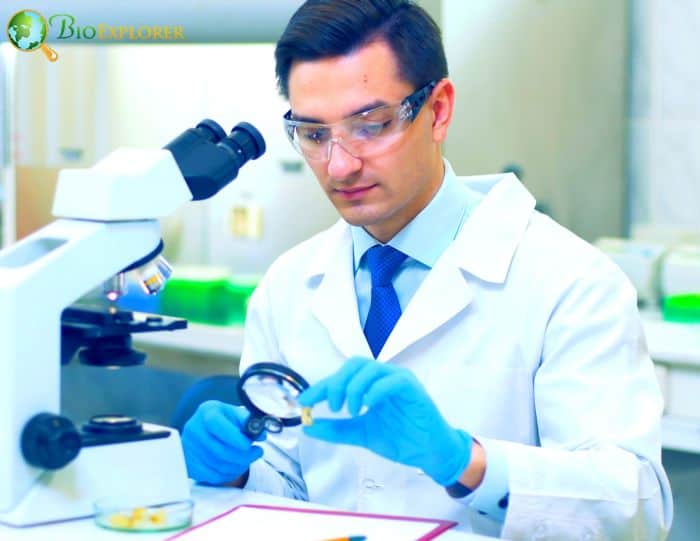
By establishing a clear connection to the plant defense mechanism, a recent study adds a new perspective to the role of Fatty Acid biosynthesis in plants.
- Plants ‘ fatty acids (FAs) are important for cell membrane structure. Serve as building blocks for hormones. Acyl carrier proteins (ACPs) are present in all forms of life.
- Play a role in extending and stabilizing fatty acid chains during their synthesis. A recent study by Zhenzhen Zhao and colleagues from The Ohio State University sheds light on the connection between fatty acid biosynthesis and plant defense mechanisms.
- The research reveals that FA metabolism is vital for plant immunity as Arabidopsis plants lacking Acyl Carrier Protein 1 (ACP1) displayed increased resistance against the bacterial pathogen Pseudomonas syringae.
- The study also highlights the importance of ACP1 in maintaining balance, which influences plant stress responses.
- This discovery opens possibilities for utilizing ACP1 to address abiotic stresses by modulating hormone signaling pathways.
- This investigation emphasizes the significance of studying members within gene families, such as ACP4, as they may have roles in plant resistance mechanisms.
As a result, studies revealed a direct connection between FA metabolism and plant immunity and the potential function of ACP1 in plant defense in various economically significant crops.
Suggested Reading:
Top 26 Best Hawaiian Flowers
7. Researchers demonstrate how a particular group of cells in the root’s tip respond to a manganese deficiency (Germany, Oct 2022)
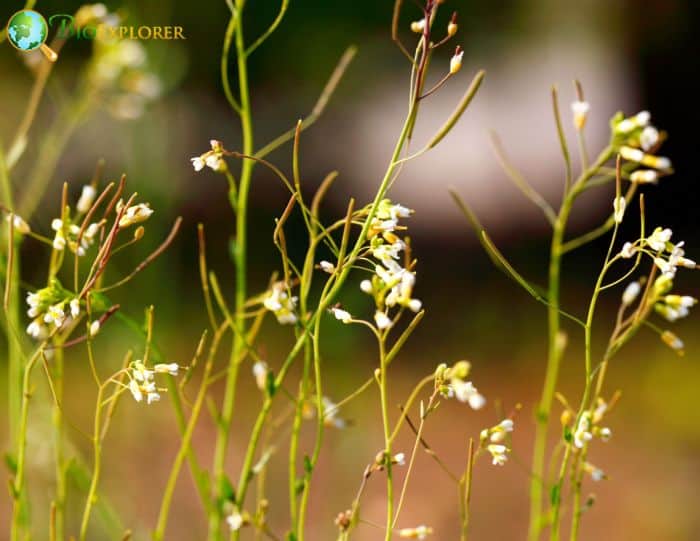
Researchers show for the first time how plants perceive manganese deficiency and which processes subsequently take place in the plant at the molecular level using the model plant thale cress (Arabidopsis thaliana).
- The “manganese-sensitive niche” is a special cell population that the team discovered in the plant root.
- In contrast to all other root cells, these cells exhibit a unique response to manganese deficiency: for the duration of the deficiency, the calcium concentration within the cells rises and falls repeatedly. The duration of each oscillation is roughly 30 minutes.
- Nobody had seen the coordinated occurrence of calcium signals in individual plant cells to create such multi-cellular oscillations in calcium concentration. Together, only a few hundred cells create the signal.
- The epidermal cells in the outermost root layer – are the first to increase calcium concentration. Researchers have found that calcium oscillations brought on by manganese deficiency activate two unique enzymes known as calcium-dependent protein kinases (CPK21 and CPK23), promoting manganese uptake.
- These become inactive once the calcium releases the kinase. The theory is that each oscillation re-starts this process until the plant has achieved sufficient manganese uptake.
- The process includes the manganese transporter NRAMP1, which delivers manganese to the root cells. By phosphorylating a specific amino acid, the protein kinases CPK21 and CPK23 interact with this transporter to control the uptake of manganese (Thr498).
The study’s results, which frequently affect plants in calcareous and alkaline soils, could eventually lead to techniques for increasing plants’ resistance to manganese deficiency, the researchers’ goal.
Suggested Reading:
Asian Spider Flower
Flower Type: Annuals8. Recently scientists discovered how a little peptide strengthens almonds’ fight against harmful microbes (USA, Oct 2022)
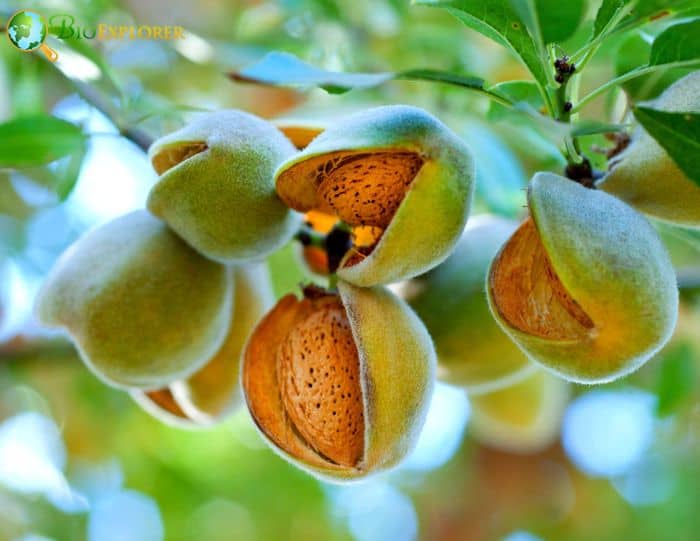
Researchers are working to create and test new medicines because there is no viable cure for Xylella fastidiosa-infected sick almond trees. Small peptides (molecules containing chains of up to 50 amino acids) have now been shown by researchers to be a promising treatment for preventing plant diseases brought on by X. fastidiosa, such as almond leaf scorch (ALS).
- A recent study examined the effects of BP178, a particular peptide, when administered to almond plants by endotherapy, a procedure akin to plant vaccination, to see if it affected ALS.
- The researchers discovered that the peptide may kill bacteria directly and activate plant defense mechanisms, serving two purposes for disease prevention.
- It was discovered that the therapy considerably lowers the number of pathogens and illness symptoms and causes almond trees to mount a powerful defense.
- Their findings concur with related research done by researchers on other plants, such as tomatoes.
- Although this study was done on plants in a greenhouse, it is anticipated that this peptide can be used in nurseries and the field thanks to commercial and therapy systems and cost-effective peptide manufacture.
This finding is an important development in the fight against Xylella fastidiosa-related illnesses. Due to the peptide’s biodegradability and minimal likelihood of bacterial resistance development, these chemicals open up the potential for sustainable crop defense and disease control.
Suggested Reading:
Difference Between Prokaryotic And Eukaryotic Cells
9. Researchers found new information on how membrane proteins affect plant growth (Japan, June 2022)
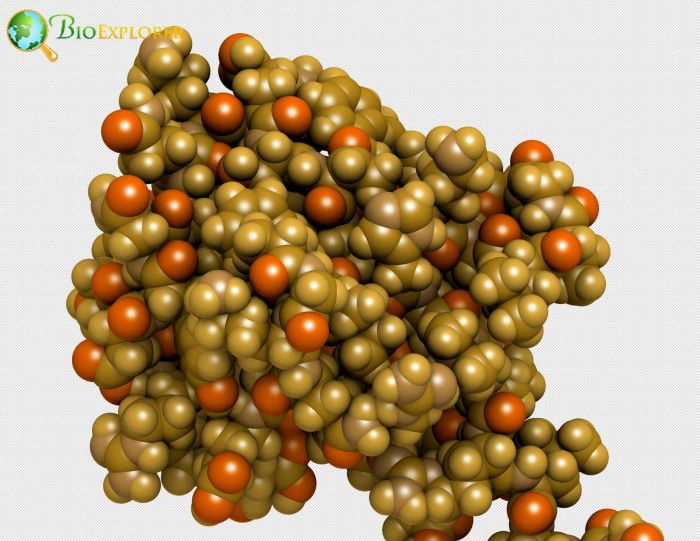
Scientists have uncovered two enzymes that govern protein degradation in plants’ cell membranes and established their functions in plant growth and development.
- A little regulatory protein, ubiquitin, is present in most eukaryotic species’ cells. It is crucial for changing how other proteins function and plays a key role in protein localization and protein breakdown within the cell.
- By binding to and releasing from the target protein, a process known as ubiquitination, ubiquitin modulates these activities.
- Enzymes known as ubiquitin ligases catalyze the addition of ubiquitin to target proteins, and deubiquitinating enzymes catalyze the removal of ubiquitin from target proteins (DUBs), which plant DUBs could ubiquitinate membrane proteins directly remained a mystery.
- The researchers showed that the BRI1 plant hormone receptor on the cell membrane is specifically targeted by two Arabidopsis thaliana DUBs, UBP12 and UBP13. Brassinosteroids (BRs), steroidal phytohormones necessary for growth and development, can only be found with BRI1.
- Normally, when BRI1 detects BR, it activates a pathway that controls the nucleus’s ability to express certain genes.
- Although the regulatory mechanism for how cellular BRI1 abundance is optimized in the cells is unknown, it is essential for accurately mediating the BR signal. The researchers showed that BRI1 was deubiquitinated and stabilized by UBP12 and UBP13.
- They demonstrated that UBP12 and UBP13-deficient Arabidopsis thaliana plants were severely dwarfed and significantly less sensitive to BRs.
- Growth problems were largely corrected when these UBP12 and UBP13-deficient plants were given a mutant BRI1 that could not be ubiquitinated. UBP12 and UBP13 specifically target and affect ubiquitinated BRI1.
The study demonstrated that UBP12 and UBP13 are important plant growth regulators. The work also sheds light on how membrane protein stability is preserved, but more investigation is needed to comprehend BRI1 dynamics in the cell completely. Ultimately, the results demonstrate that plant DUBs play similar roles to mammalian DUBs.
Suggested Reading:
Explore Vesicles, Types & Their 9 Major Functions
10. New research discovers molecular “blueprint” that explains the plants’ process of perceiving light (USA, Mar 2022)
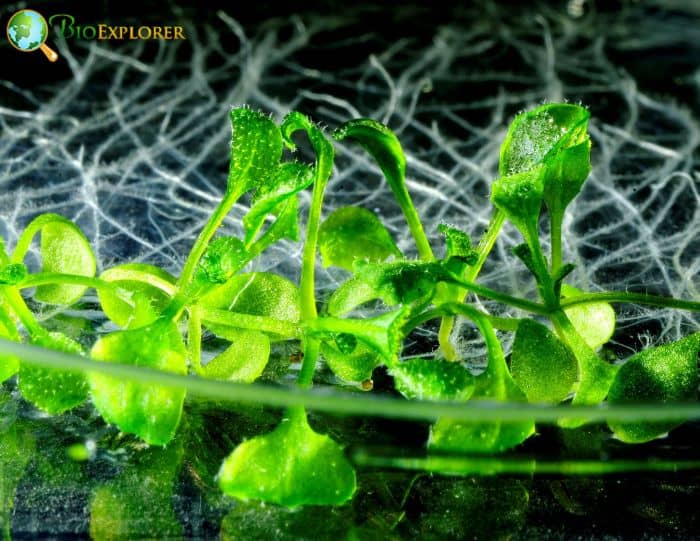
Plants perceive and respond to their environment by affecting life-sustaining processes with photoreceptors like PhyB. The novel structure provides insight into how PhyB functions and holds promise for various applications in cellular imaging, agriculture, and renewable energy sources.
- Researchers used a common weed called Arabidopsis thaliana, one of the most studied plants on Earth, to determine the picture of PhyB at nearly atomic precision.
- This little flowering plant makes an excellent research model since it grows easily, reproduces quickly, and is compact. The research team captured approximately 1 million particle images of PhyB coupled to its natural chromophore – a molecule that absorbs a particular color of light – using VAI’s powerful cryo-electron microscope, or cryo-EM.
- They eventually reduced the photos to 155, 000, which they utilized to build the complete representation of PhyB’s structure at a 3.3-angstrom near-atomic level.
- They discovered a surprising 3D structure with parallel and anti-parallel parts instead of the parallel structure mentioned by past investigations.
- According to the research, PhyB may dramatically alter its form in response to modest changes in light-sensing chromophore molecules, amplifying such changes and signaling the presence of light in the plant.
PhyB and other phytochromes were formerly thought to be likely related to single-cell organisms, such as certain bacteria. These results refute that idea and establish the groundwork for more research into the complex workings of PhyB and phytochrome.
Suggested Reading:
15 Latest Inventions in Botany For 2018
11. Researchers have developed a wearable sensor for plant leaves to detect water loss early. (USA, Mar 2022)
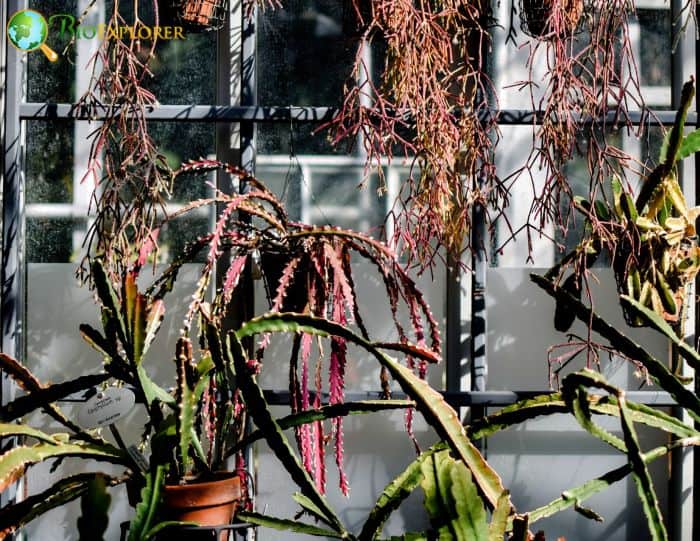
When thirsty, plants are unable to communicate. Moreover, outward indicators like wilting or browning leaves only appear once most of their water has been lost. Researchers have developed a wearable sensor for plant leaves to detect water loss early.
- The researchers manufactured two different kinds of electrodes: one from nickel placed in a narrow, squiggly pattern and the other from partially burned paper covered in a waxy layer.
- The nickel-based electrodes functioned better and produced larger signals when the removed soybean leaves dried when the team attached both electrodes to them with transparent adhesive tape. The thin, squiggly nature of the metallic film likely allowed more of the tape to stick to the leaf surface, as evidenced by the stronger wind adhesion of the metal ones.
- The scientists then used the metal electrodes to make a wearable gadget for plants and affixed it to a real plant in a greenhouse.
- A quick, easy machine learning technique effectively translated the data from the device’s wireless data sharing to a smartphone app and website into the percentage of water content lost.
- According to the researchers, keeping track of the water content of leaves can reveal information about potential pests and hazardous chemical exposure.
The next step is to test the gadgets in outdoor gardens and crops to determine when plants need to be watered, potentially conserving resources and increasing yields because the plant-wearable device delivers trustworthy data indoors.
Suggested Reading:
Top Cell Biology News of 2020 – A Round Up
12. Researchers used bacteria to create plant protein mechanisms to advance 50 years of work. (USA, Feb 2022)
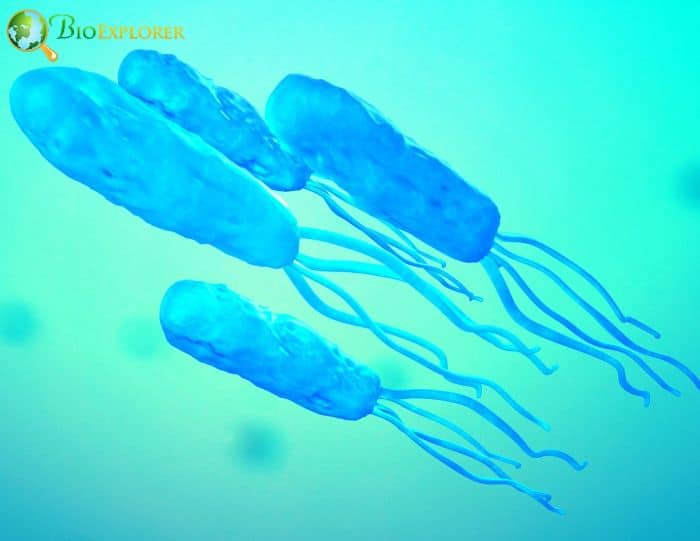
Adding several elements from plant chloroplasts has allowed researchers to alter the protein folding characteristics of bacteria successfully. The achievement allows the researchers to examine chloroplast proteins in more depth and discover methods to improve their function more quickly, a goal that has taken 50 years to achieve.
- This research aimed to understand better and utilize Rubisco, a protein found in plant chloroplasts that starts fixing atmospheric carbon dioxide into glucose during photosynthesis.
- In contrast to many other photosynthesis-related proteins, Rubisco is sluggish and necessitates a multitude of ‘chaperones’ to function effectively.
- The majority, if not all, of these partners, have been uncovered through research over the past few decades.
- Escherichia coli, also known as E.coli, is a bacterium commonly employed in science as a host to more swiftly investigate proteins. This gives scientists new powers to analyze and speed up plant Rubisco in E.coli. The ANU team used a robust, genetically modular e.coli expression method.
- The work provides a novel system better suited for increasing Rubisco efficiency by building on an expression tool of a similar nature created at the Manajit Hayer-Hartl laboratory.
- Luckily, this new method now allows for an experimental throughput that was previously unheard of, with results accessible in days as opposed to the months that our slow and expensive traditional testing approach utilizing plant transgenics would require.
The research marks a crucial turning point in tuning up Rubisco activity, even if this novel E.coli Rubisco bioengineering system will require additional design modifications to tailor its compatibility with various crops.
Suggested Reading:
Top 14 Biochemistry News, Innovations & Breakthroughs In 2017
13. Botanist discovers new iris species in South Africa’s Langeberg Mountains. (South Africa, Oct 2022)

In the Langeberg Mountains of the Western Cape, South Africa, a botanist found a stunning new species of the Iridaceae family. The deep cherry-pink color of the new species’ petals inspired its scientific name, Geissorhiza seracina (also known as the Cherry satin flower).
- Early in December 2021, the botanist discovered the plants while trekking a 40 km, two-day trail with his buddy and mentor on the Boosmansbos Wilderness trail to Grootberg.
- He snapped pictures but didn’t gather any specimens. He didn’t realize it was possibly a new species until he returned and forwarded the images to a specialist at the Compton Herbarium at the South African National biodiversity Institute (SANBI).
- A week later, he hiked 34 kilometers in nine hours back up the mountain to get a herbarium specimen for analysis and a description of the species anatomy. Several bulbs were collected for ex-situ preservation in the Stellenbosch University Botanical Garden.
- They recently released a description of the new species in the South African Journal of botany and another top authority on the Iris family.
Seldom are new Iridaceae species discovered. Rarely does a new species turn out to be so stunning. With this most recent discovery, there are currently 106 Geissorhiza species native to South Africa, 24 of which have been found since 1985.
Suggested Reading:
25 Most Famous & Dangerous Bug Eating Plants
14. Plant pathologists work together to exchange information on a growing risk to corn production. (USA, Jan 2022)

Tar spot, a global danger to corn, has substantially affected corn production in the United States. Plant pathologists have created a recovery strategy to address the current and future demands of tar spots to lessen the disease’s effects in response to this emerging threat.
- In Mexico in 1904, the first tar spot of corn was discovered. Throughout Central and South America and the Caribbean, it spread to 15 more nations before reaching the United States in 2015 and Canada in 2020.
- When environmental circumstances are optimal for infection, tar spots can produce up to 100 percent losses.
- To address this expanding threat, 22 plant pathologists from 12 institutions have created a recovery plan that examines the tar spot’s present knowledge and future needs, aiming to reduce the disease’s impact.
- They closely collaborated with plant pathologists across North America to compare notes and employed modern technologies to track the tar spot’s start and progression in real-time.
This recovery plan highlights the value of ongoing cooperation between university Extensions, various plant disease diagnostic labs, the USDA, and industry to track and identify new and emerging plant infections that potentially impact US agriculture.
Suggested Reading:
The Biology Of The Plant Central Vacuole: Structures And Functions
15. A new study shows how, with “chemically encoded” enzymes, plants can modify their lignin to adjust to climatic change. (Sweden, Dec 2022)

According to a recent study, plants use diverse combinations of the enzymes LACCASEs to build distinct lignin chemistries that allow them to grow tall and withstand climate fluctuations.
- Lignin stores around 30% of the planet’s total carbon, making it a significant environmental carbon sink. Without lignin, plants would be unable to develop or endure environmental changes.
- It also enables them to hydrate and grow to incredible heights of 100 meters. Various lignin chemistries modify the mechanical strength and waterproofing at the cellular level to assist plant development and survival. Recent research has shown that lignin has a chemical “code” modified at the cellular level to serve various plant functions.
- Researchers discovered that each cell modifies its lignin “chemical code” to adapt to environmental challenges like wind and drought.
- These enzymes are referred to as LACCASEs. The research demonstrates how each plant cell’s lignin is spatially regulated at the nanoscale scale.
The process that enables plants to grow, hydrate, and withstand the pressures of climate change is ultimately the management of lignin chemistry at the cellular level. With the help of these findings, it will be possible to pick plants based on their lignin codes and increase the resilience of crops and trees to water scarcity issues.
Suggested Reading:
Differences Between Plant and Animal Cells – A Complete Overview
Conclusion
Commencing with methane emission by trees, plant adaptive role in epigenetic changes, development of wearable sensors to detect the rate of transpiration, the discovery of molecular “blueprint” that explains the plants’ process of perceiving light, plant immune response, and role of new peptide, bioengineering of photosynthetic enzymes to overexpress the protein, and more. Thereby with these developments as the foundation, we march forward and expect more exciting findings in 2023.


